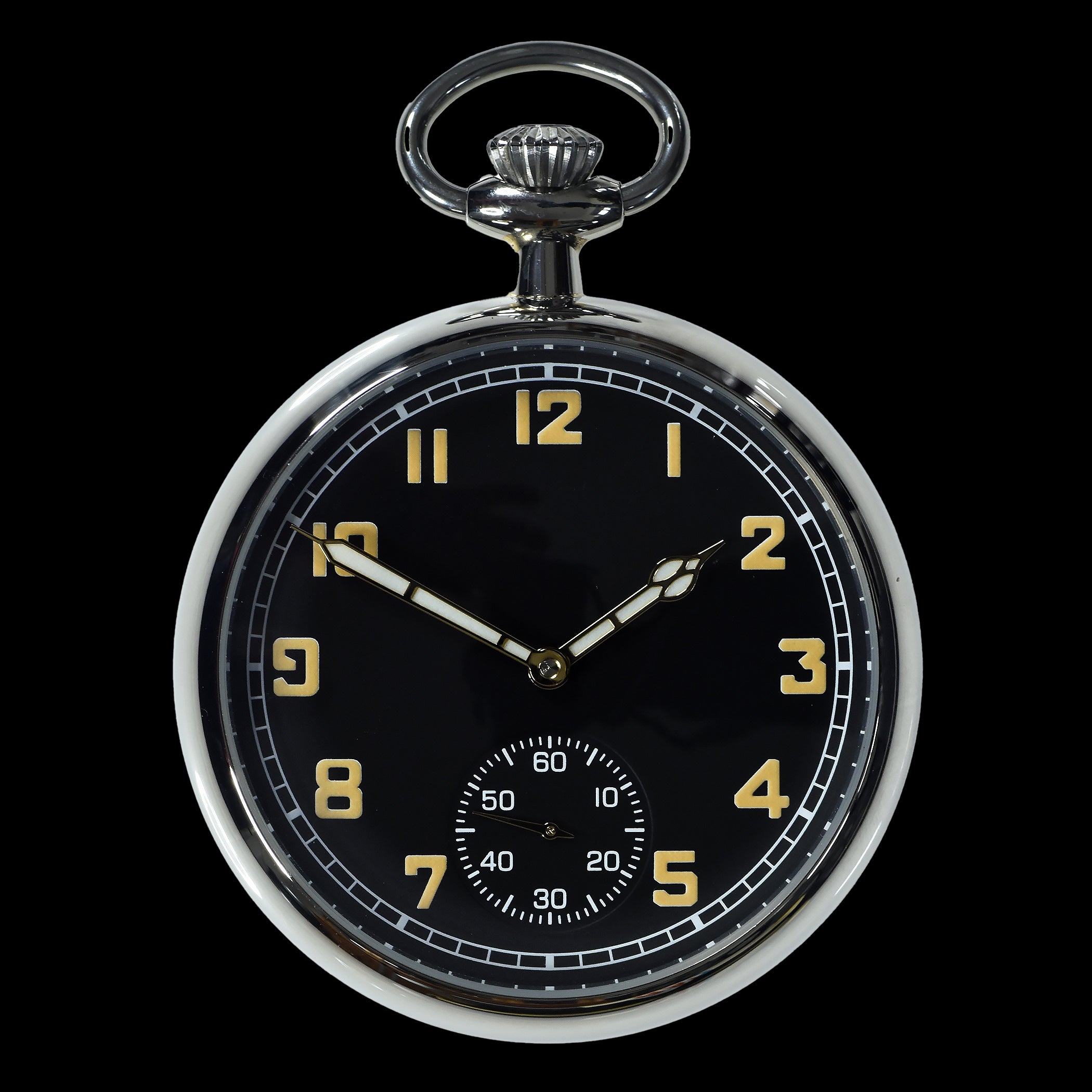
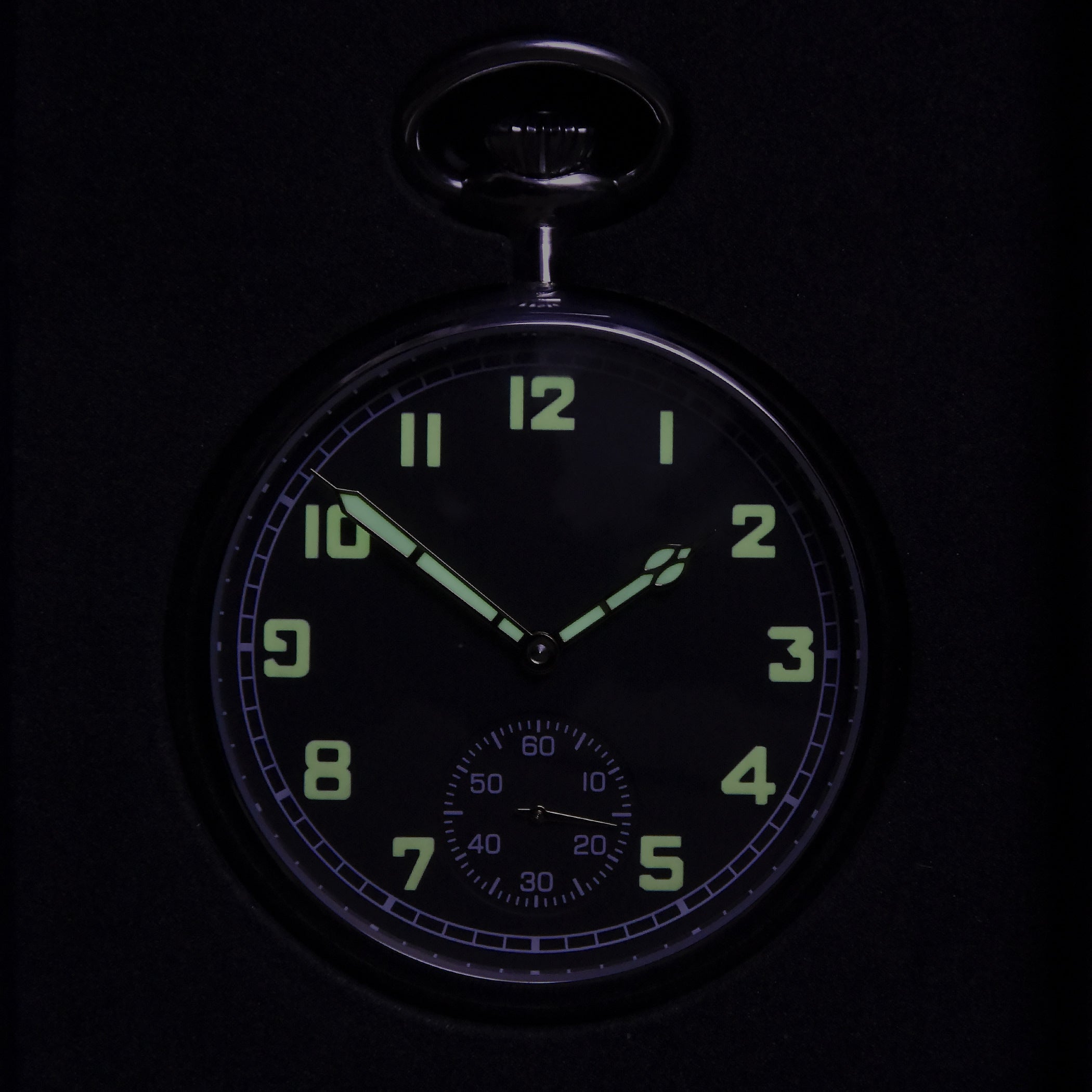
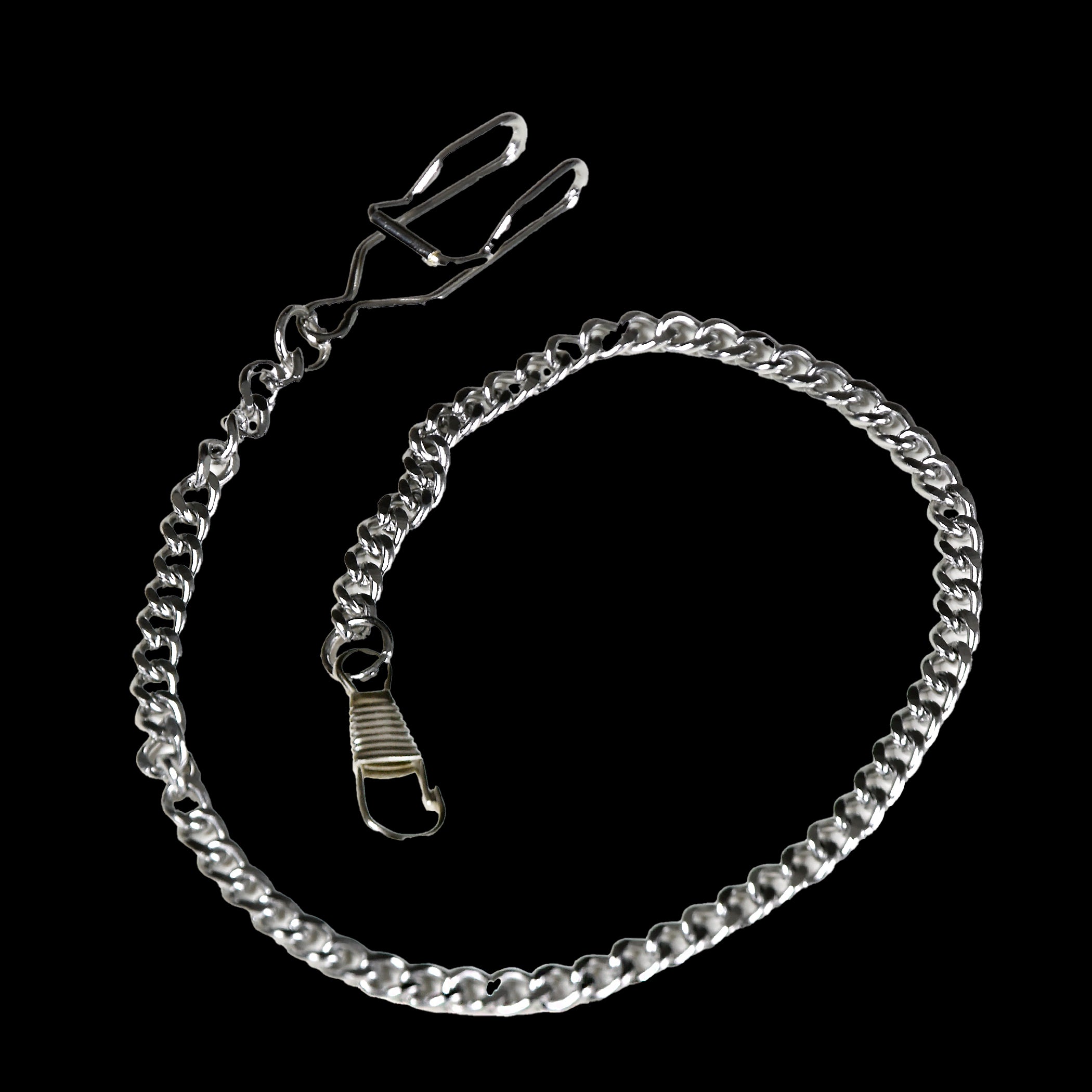
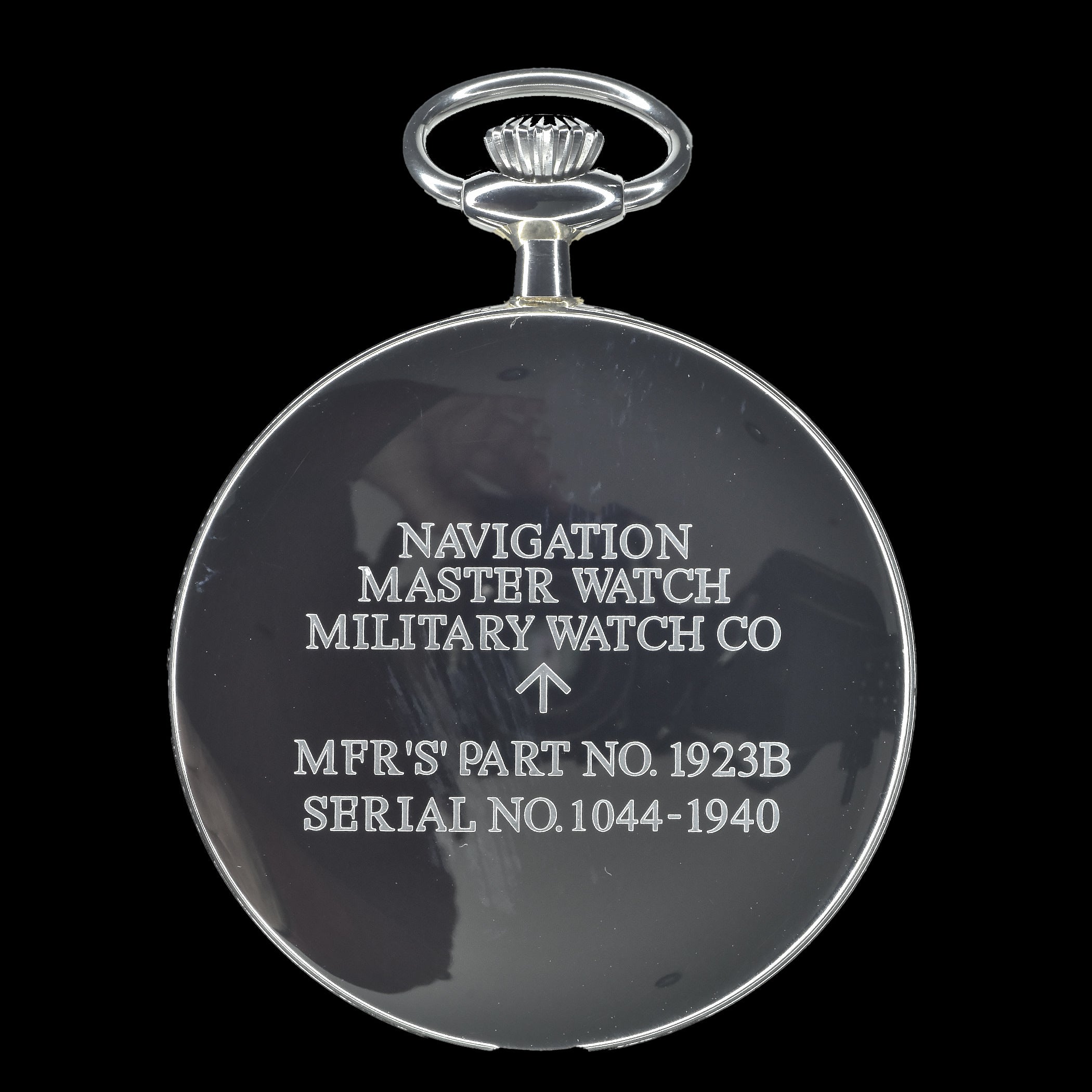
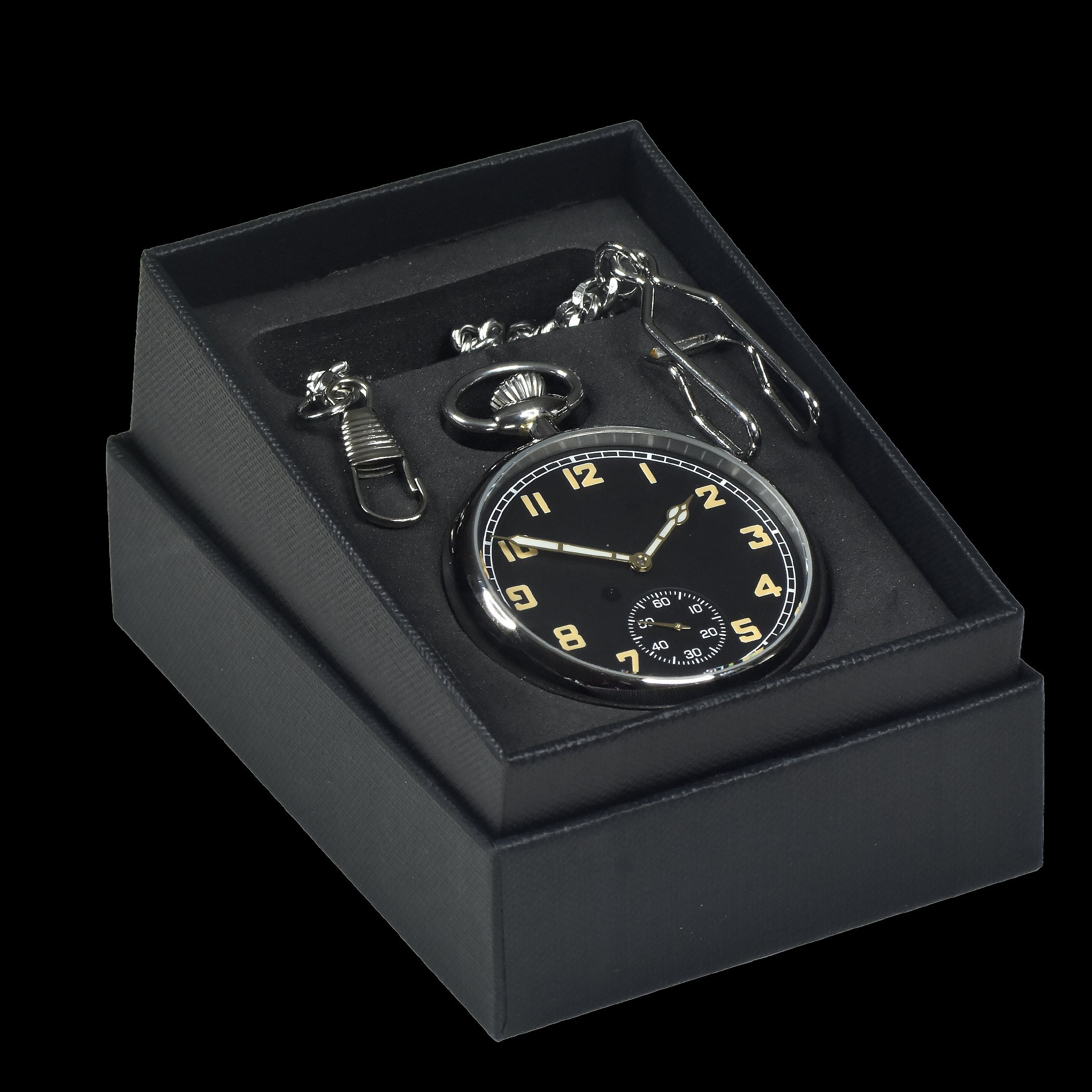
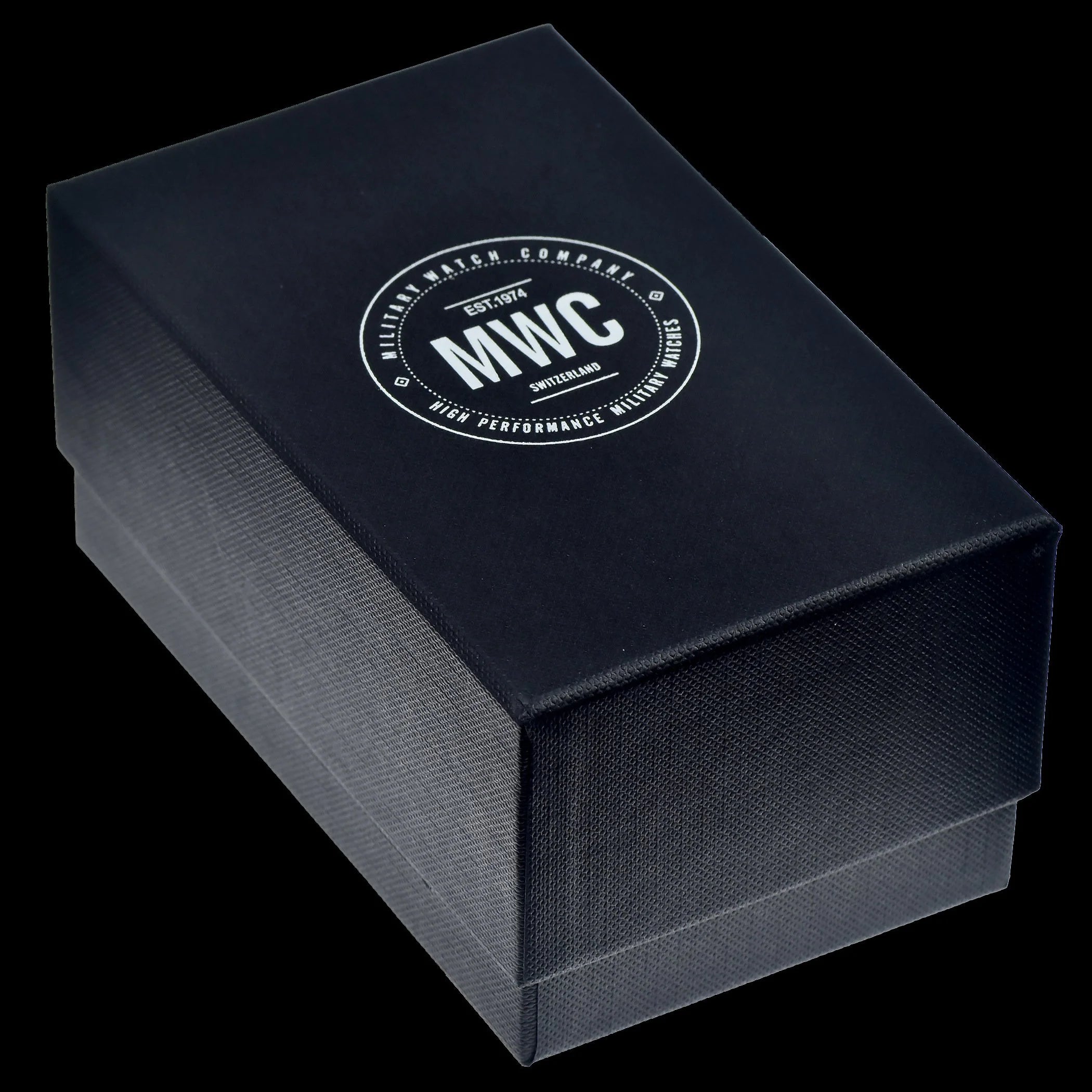
MWC WWII British Military Pattern 17-Jewel Hand-Wound Pocket Watch
Description
SKU: MWC/ZWK/PW
Military Pocket Watch
Military pocket watches, along with their civilian equivalents, are seeing a significant increase in popularity. Historically, they were employed for land-based, airborne, and naval applications. During WWII, they were frequently used by RAF and USAAF navigators and bomb aimers (US: bombardiers) in preference to conventional wristwatches. These pocket watches were easier to place on a chart, bench, or in the nose of the aircraft while working or approaching a target. At the time, wristwatches were small, with an average diameter of only around 32mm, making the larger pocket watches, with case sizes of around 50mm, much easier to read.
This classic WWII pattern military watch, featuring a small subsidiary dial second hand, is based on designs made by a variety of manufacturers. It has a traditional 17-jewel hand-wound movement and has been upgraded to a glass crystal, which is superior to the easily scratched or damaged acrylic/plastic crystals used during World War II.
This particular pocket watch has a solid stainless steel case made from Military Grade 316L stainless steel, with a subsidiary dial second hand.
SPECIFICATIONS:
- Diameter: 47.5mm
- Length with Crown: 58mm
- Thickness: 14mm
- Crystal Width: 40mm
- Crystal Type: Domed Glass
- Movement: Cal. 9011-PI, 17 Jewels, 18 000 A/h
- Case Material: Stainless Steel
- Caseback: Stainless Steel
- Luminosity: Luminova
- Included: Complete with chain
- Packaging: Delivered in its original box
- Guarantee: 2-year factory guarantee
ESSENTIAL WINDING INSTRUCTIONS AND GUIDELINES
To wind the watch from an empty state to full, you'll need approximately 30 turns of the crown (most other hand-wound watches require 40 or more turns, so this movement needs somewhat less). Once fully wound, the watch boasts an average power reserve of around 36 hours. It's crucial to exercise caution during the winding process.
For those who use the watch daily and wind it consistently, such as every morning, a slight variation in the number of turns will not significantly impact the overall power reserve, as it will remain well below the maximum of around 36 hours.
Some users have reported that 25 turns are sufficient when winding every 24 hours. This is logical because the watch wouldn't need a full wind after 24 hours. Nevertheless, individual preferences may vary, and most owners tend to develop a sense of the optimal winding routine within the first few days of ownership.
Above all, it's crucial to emphasize the importance of not overwinding the watch, which could lead to locking up issues or, worse, damage or breakage of the mainspring. Adhering to the recommended winding procedures ensures the longevity and proper functioning of the timepiece.
Note: Overwinding occurs when a mechanism is wound beyond its designated stopping point, posing the risk of damage or destruction to the winding mechanism. Overwinding is a concern primarily for manually-wound watches, not for their automatic counterparts, which normally cannot be overwound.
Europe, UK, and Rest of World
Tracked Mail:
- Europe: €11.75 / £9.99 / US$12.95
- UK: £7.95 / €9.50 / US$10.50
- Rest of World: US$22.75 / €20.50 / £17.50
Express Courier (UPS or FedEx):
- Europe: €23.50 / £19.99 / US$25.95
- UK (UPS/DPD): £12.95 / €15.25 / US$16.95
- Rest of World: US$45.50 / €41.25 / £34.95
Note: The exact shipping cost may vary slightly depending on the weight and dimensions, but it will only differ by a small amount and will be shown at checkout. The above rates cover approximately 85% of parcels.
For more details click here
If you are not satisfied with your purchase or it does not meet your requirements, you can return it within 14 days of receipt. The item must be in its original condition and packaging. To return a watch, please notify us using the form at the link below.
Please note that the watch, strap, or other purchased item must be in new and resalable condition. The returns policy will not apply if the item has been worn, the plastic protectors on the dial and/or caseback have been removed, or if there are other signs of usage, such as a worn strap. Essentially, the goods should not have been used beyond what would be expected if you had handled or examined an item in a shop before purchase.
To request a return authorization number, please visit this link.
Read our full returns policy here








MWC WWII British Military Pattern 17-Jewel Hand-Wound Pocket Watch
